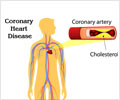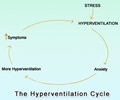Studies point out that mortality rate following a heart attack has fallen by more than 50% in Europe over the past 25 years.
However, because only minor advances in the medical treatment of AMI are expected over the next decade, it is through organizational changes in the pre-hospital phase that mortality rate will continue this decline to below 5%.We estimate that acute coronary syndromes (ACS) account for 1.5 million hospital admissions throughout Europe each year. Almost half these patients present with ST-elevation myocardial infarction (STEMI), which are major and immediately life-threatening events.
Just 30 years ago, mortality of acute myocardial infarction (AMI, heart attack) in Europe was over 30%. This rate has now dropped dramatically to around 10% within the first month. In clinical trials - where the sickest patients are often excluded - mortality rate is as low as 5%.
This dramatic improvement was initially brought about by the opening of dedicated coronary care units in hospitals. This was followed by 20 years of drug development, and a significant improvement in survival rates. Among the important drugs introduced were those preventing blood from clotting, or even dissolving the clot responsible for blocking the coronary vessel (and so causing the AMI. Other drugs groups include beta-blockers, ACE inhibitors, and statins developed to lower cholesterol levels. More recently, the treatment of large heart attacks with balloon angioplasty has been a major advance. Although new and better drugs are being developed and drug combinations being refined, there is less belief in major drug breakthroughs in the next decade.
The pre-hospital phase of AMI treatment has also undergone several changes over the past decade: diagnosis, supported by telemedicine, has improved, and many interventions have been moved from the hospital to the field. It is in this early phase that we must now adopt new collaborations and organizations if mortality rate in this large patient population is to continue its decline. We must adopt new lean principles in the entire organization of the pre-hospital phase, starting with public awareness of symptoms, and how to raise the alarm. For those patients whose first symptom is cardiac arrest, basic bystander resuscitation should become standard. Despite an abundance of automated external defibrillators (AED) in many regions, their localization and use are often not well organized. Heart attack victims should call an emergency number, instead of being self or family-transported to the hospital.
There are financial and political disincentives for the transfer of STEMI patients for balloon angioplasty: all of these factors should be addressed: Primary Hospital, Loss of revenues, Referring doctors, Loss of patients and subsequent revenue, Pride and unwillingness to admit that another physician can provide better medical care, Medico-legal liability during transfer, Lack of organized emergency services, Private company vs. fire department, Conflict between firemen and paramedics, Time constraints: prolonged run times, ECG triage, What incentive (transfer between hospitals is low paid in some countries)?
Advertisement
Source-Eurekalert
ARU














